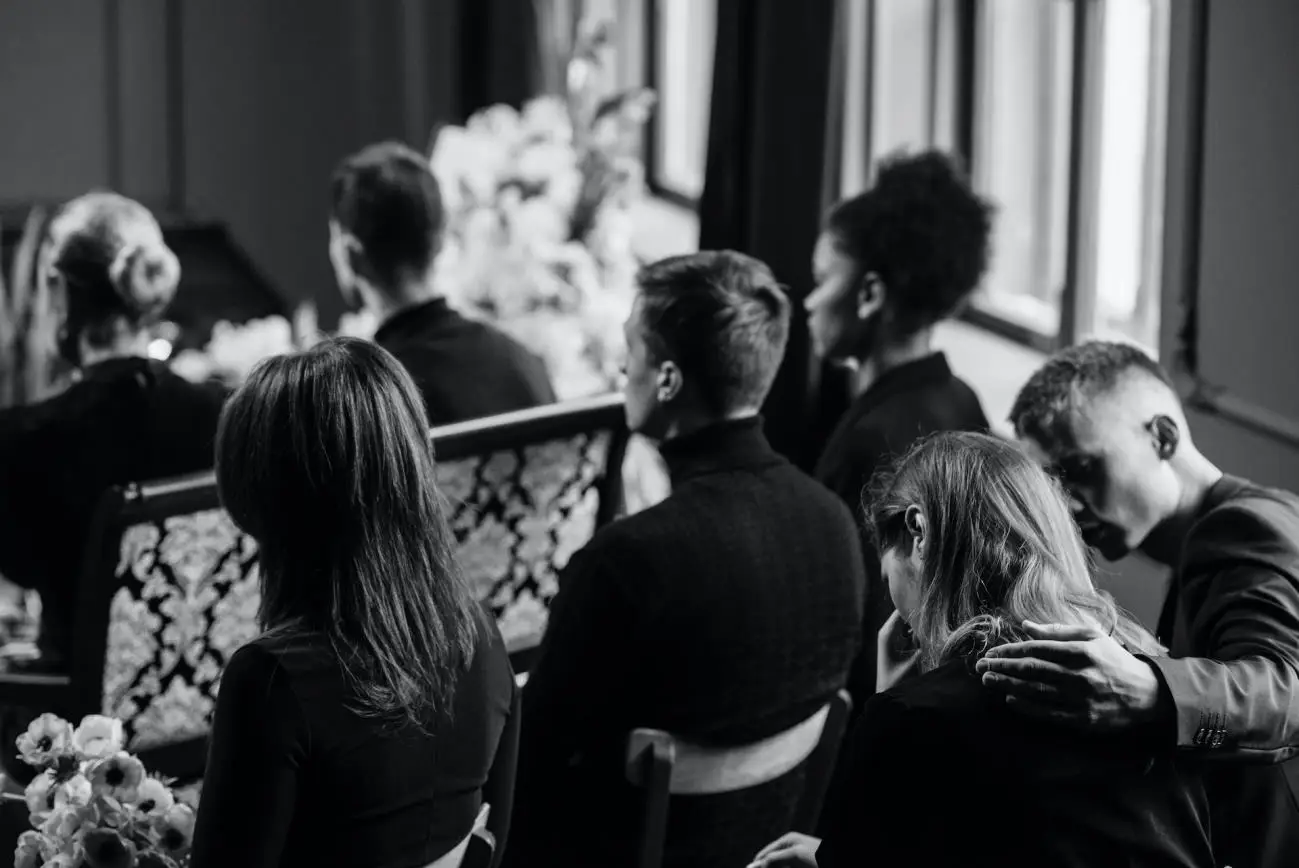The Complete Guide to Attending a Funeral
Attending a funeral, memorial, or celebration of life service can be an emotional and, at times, intimidating experience. For first-time attendees or those who want a refresher on what to expect, this guide should help you feel more prepared and at ease about attending the event.

In this article, we’ve compiled a list of answers to common questions and concerns covering everything from what to wear to how to express your condolences.
Dressing Appropriately
One of the most common concerns when attending a visitation or funeral is what to wear. While there is no one-size-fits-all advice, a good rule of thumb is to dress as if you were attending a church service or job interview.
For color, most tend to lean towards darker, more neutral shades such as black, navy, or gray. However, be mindful of any specific requests from the family, such as wearing a particular color or type of clothing to honor the deceased.
In the case of less traditional services such as a celebration of life or memorial service, the dress code is usually a little more relaxed, but not overly casual. Although it can feel a little intimidating trying to decide what to wear, try not to overthink it. Ultimately, your presence and the support you show for the family are what truly matter.
Arrival and Finding a Seat
Before making plans to attend, the first step is confirming the time and location of the event. To find this information, you can contact the funeral home or read the deceased's obituary and note the dates and times of events. Pay attention to the following details:
1. Do the visiting hours take place on the same day as the funeral or memorial service?
2. If visitation occurs on a different day, will it be held at the same location as the ceremony?
3. Does the visitation or ceremony occur at a location other than the funeral home, such as a church or event venue?
It’s usually best to arrive at least 45 minutes before the ceremony to give yourself time to sign the guestbook, visit with the family, and find a seat. Seating is often reserved for immediate family members in the front rows. If you are not a member of the immediate family, choosing a seat several rows back from the front is usually safe.
If you are a pallbearer, honorary pallbearer, or other specially named guests, you may have specific seating for the ceremony. It’s best to find a member of the funeral home staff to confirm any details before finding your seat.
Bringing Children
Bringing children to a funeral can be a positive and healing experience for both them and the grieving family. Having children present can remind everyone of the continuity of life and provide comfort during a challenging time. When considering whether to include children in the funeral process, take into account their age, maturity level, and relationship with the deceased.
Encourage open conversations about death and mourning, using age-appropriate language and explanations. Providing a simple overview of the funeral's purpose and what to expect during the service can help the child feel more comfortable and prepared.
Honoring Religious or Cultural Customs
Funerals often involve specific religious or cultural customs. If you're unfamiliar with the traditions of the deceased's faith or culture, doing some research beforehand can help you feel more prepared.
Most importantly, it’s best to show respect, but only participate as much as you feel comfortable. Remember that it's okay to observe if you’re unsure of performing specific customs or traditions.
Offering Condolences
When offering condolences to the grieving family, simple and heartfelt words can work best. A phrase like, "I'm so sorry for your loss," or "My thoughts are with you and your family," can be comforting. If you knew the deceased well, feel free to share a personal memory or story.
Keep in mind that the visitation or funeral may not allow for lengthy conversations due to time constraints. A heartfelt note or follow-up call is a great way to provide additional support to the family after the service.
If you can't attend the visitation or ceremony, offering support through online condolences and sharing memories can also be meaningful to the family.
Sending Flowers or Donations

Sending flowers to the funeral home or family residence is a thoughtful and traditional way to express your condolences. Flowers can provide comfort and serve as a visual tribute to the deceased, symbolizing love, respect, and support. When selecting an arrangement, you could consider the family's preferences, the deceased's favorite flowers or colors, or choose a classic, traditional bouquet.
Some families may request donations to a specific charity or cause in lieu of flowers. It’s usually best to read the deceased’s obituary for information on in-lieu and donation requests. If the family has not specified a preference, you may choose to send both flowers and a donation, contributing to a cause that was meaningful to the deceased or their loved ones.
Regardless of your choice, remember that the key purpose is to offer comfort and support to the grieving family during their time of need. Your heartfelt gesture, whether through flowers, donations, or simply your presence, will convey your sympathy and care for those left behind.
Follow-Up and Continued Support
In the weeks and months following the funeral, it's important to continue supporting the grieving family. Reach out with a phone call, a thoughtful note, or an offer to help with errands, meals, or household tasks. Keep in mind that the grieving process is different for everyone and the family's needs and emotions may change over time.
Consider marking important dates, such as the deceased's birthday or the anniversary of their passing, and reach out to the family to let them know you're thinking of them. This can help them feel supported and remembered during these particularly difficult times.
By maintaining your connection and offering ongoing support, you not only provide comfort to the grieving family but also create an opportunity for healing and shared remembrance. Your consistent presence can make a significant difference in helping the family navigate their journey through grief and loss.
Conclusion
Attending a funeral can be an emotional and sometimes overwhelming experience, but we hope the tips and advice in this article will help you navigate the event with confidence. Remember, your presence and support during this challenging time are what truly matter to the grieving family. By following these guidelines and focusing on honoring the deceased and comforting their loved ones, you can help make a difficult day just a little bit easier for everyone involved.
If you need further information on any topic covered in this article, or if you have a question about attending a funeral that wasn’t addressed, please feel free to reach out. We're here to help in any way we can!
